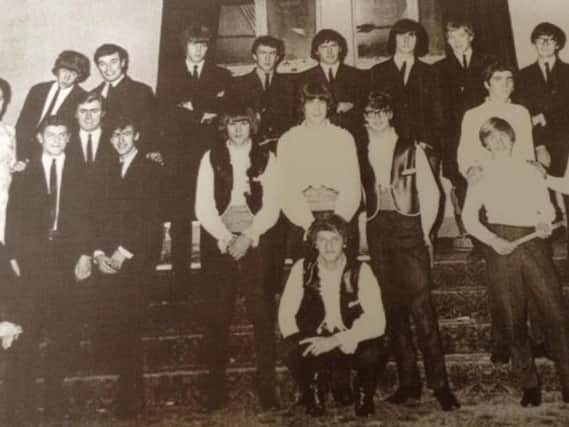The Granada, the Rolling Stones and rock 'n' roll royalty - more tales from the golden age of Rugby music


There was I, waiting at the bus stop with Lawrence Sheriff cap balanced precariously on the back of my head and with one hand on the strap of an ink-stained satchel bulging with homework, when - all of a sudden - a cry went up.
No, it can’t be. Yes, it is… it’s Mike Sarne the pop star!
Cue utter pandemonium. Suddenly, the figure in the Italian suit starts to run down Church Street, pursued by a small, but obviously determined group of teenage girls.
Advertisement
Hide AdAdvertisement
Hide AdWithin seconds, they are gone. The bus arrives and I get on board, bound for my home in Churchover. Sitting in the back seat, I start to wonder what that night’s ‘pop’ concert at Rugby’s Granada cinema will be like, for I know that Mike Sarne is on the same bill that features some relative newcomers to the scene called the Rolling Stones.
Even by the standards of the time, Mike Sarne was a fairly minor star.
Two years previously, he’d enjoyed chart success with Come Outside, which he’d performed as a duet with the late Wendy Richard, who would later go on to enjoy much greater fame as Pauline Fowler in the television soap EastEnders.
But if ever there was to be a portent of how pop music was changing it was that tour which brought the Stones to the Granada.
Advertisement
Hide AdAdvertisement
Hide AdJohn Leyton was also on the same bill as Sarne, but the two of them – in their slightly shiny ‘bum freezer’ suits – looked totally at odds with the casually dressed, long-haired, soon-to-be bad boys of rock and roll.
I’ve written about that show on a number of occasions, commenting how it was the end of one era and the beginning of another.
Both Sarne and Leyton looked absurdly out of their depth that night, going through the motions and perhaps aware that they were about to be eclipsed by the Stones with their wild, rhythm and blues based sound.
The next day, I walked into Berwick’s Music shop and bought an Echo Super Vamper harmonica, as recommended by Brian Jones writing in that month’s Rolling Stones fanzine.
Advertisement
Hide AdAdvertisement
Hide AdI already had a blond, basin-shaped head of hair like the group’s notorious founder. Now I would also play like him…
The Granada regularly hosted pop group tours in the early to mid 1960s. I also saw Adam Faith and the Roulettes, the Searchers, and other famous groups.
In those days, several artists would appear together on package tours touring the provincial cinemas. This was probably a throwback to the days of Variety shows being staged at theatres across the country, when performers with widely contrasting acts would appear.
These could range from conjurors to solo singers, acrobats to jugglers, and comedians to impressionists. These in turn had evolved out of Music Hall, the very British institution that had entertained the Victorians.
Advertisement
Hide AdAdvertisement
Hide AdBut like Mike Sarne, Adam Faith must also have known his days as a pop star were numbered. For bearing in mind his profile earlier in the decade, his appearance at the Granada was not particularly well received by the Rugby audience.
I vividly remember him reaching down to the front row. No one moved.
Not a single teenager reached out to touch his outstretched hand, but more pointedly, the girls didn’t utter a single scream. His days were over.
But back then, pop fans were nothing if not fickle. Whereas the Searchers were received at the Granada with great enthusiasm in 1963, when they were at the height of their fame, three years later - just over the road at the Benn Memorial Hall - they were booed off.
Advertisement
Hide AdAdvertisement
Hide AdBy that time, soul music was the big thing. When some elements in the crowd at the Benn started chanting ‘Geno, Geno’ – a reference to the Geno Washington Ram Jam Band – one of the Searchers made a racist comment.
That was it. The group struggled on with their set for a bit longer, and then dejectedly left the stage. It would be many years before people’s interest in the Searchers returned, and that was really only when the Solid Gold Sixties revival tours started to take off in the 1980s and 90s.
But meanwhile, back at the Granada, home grown talent started to get in on the act as the 1960s wore on.
Most of the emerging Rugby bands trod those well-worn boards at some time. On one occasion, during a Battle of the Bands contest, local outfit the Surf Cyders stole the show when a girl led a dog across the stage just as the group was performing Rufus Thomas’ Walking the Dog.
Advertisement
Hide AdAdvertisement
Hide AdAccording to former Reprobates drummer Brian Meredith, that simple gimmick clinched the contest. The Surf Cyders might not have been the best outfit, but they certainly made an impression on the judges, and that was what counted.
There were to be even more incongruous collaborations as the decade wore on – Jimi Hendrix and Englebert Humperdinck billed together at Leicester in 1967 – but the days when the Mike Sarnes of this world were mobbed through the streets of Rugby had definitely come to an end.
John Phillpott’s books Beef Cubes and Burdock and Go and Make the Tea, Boy! are available from booksellers or via the internet.